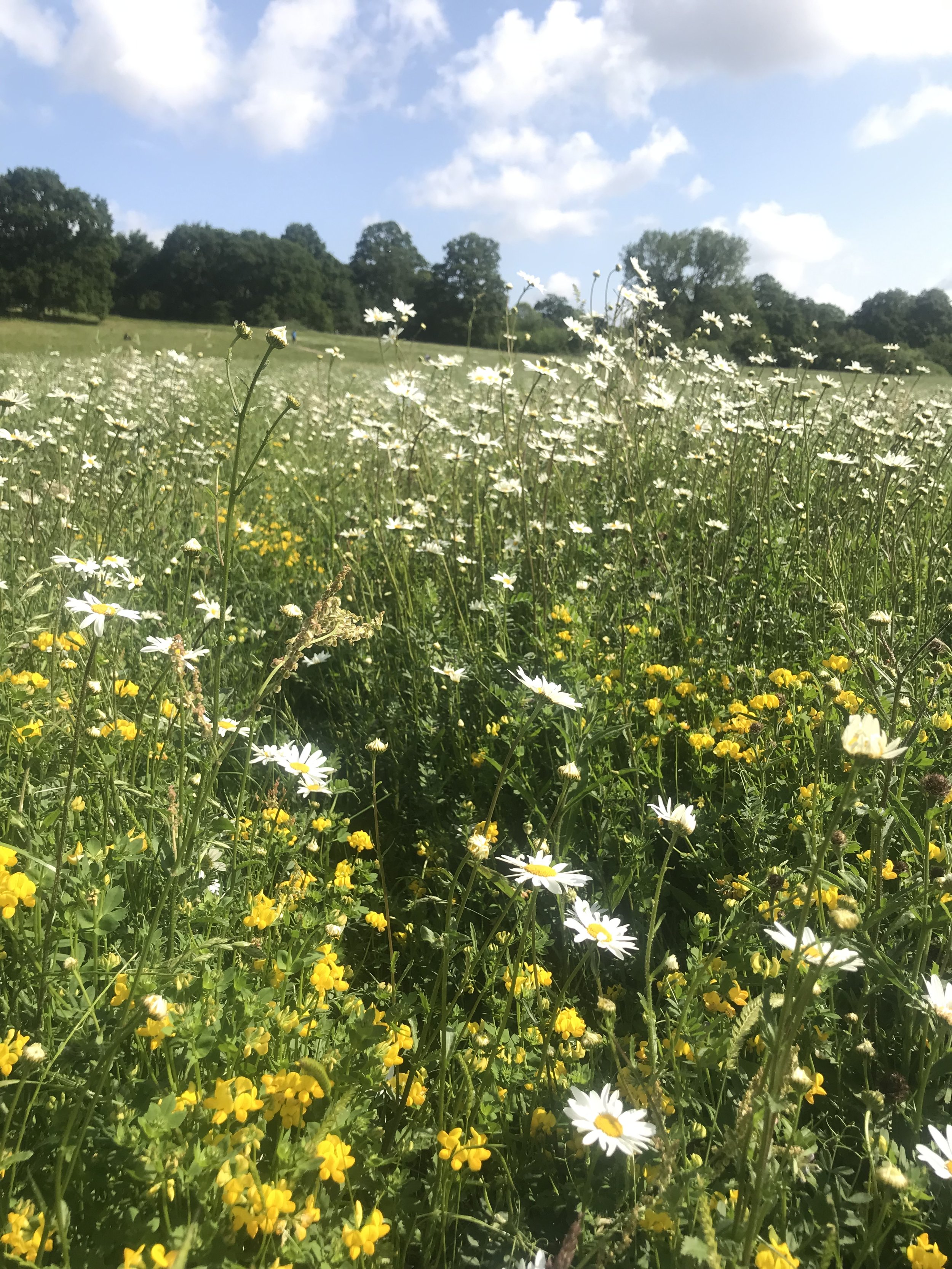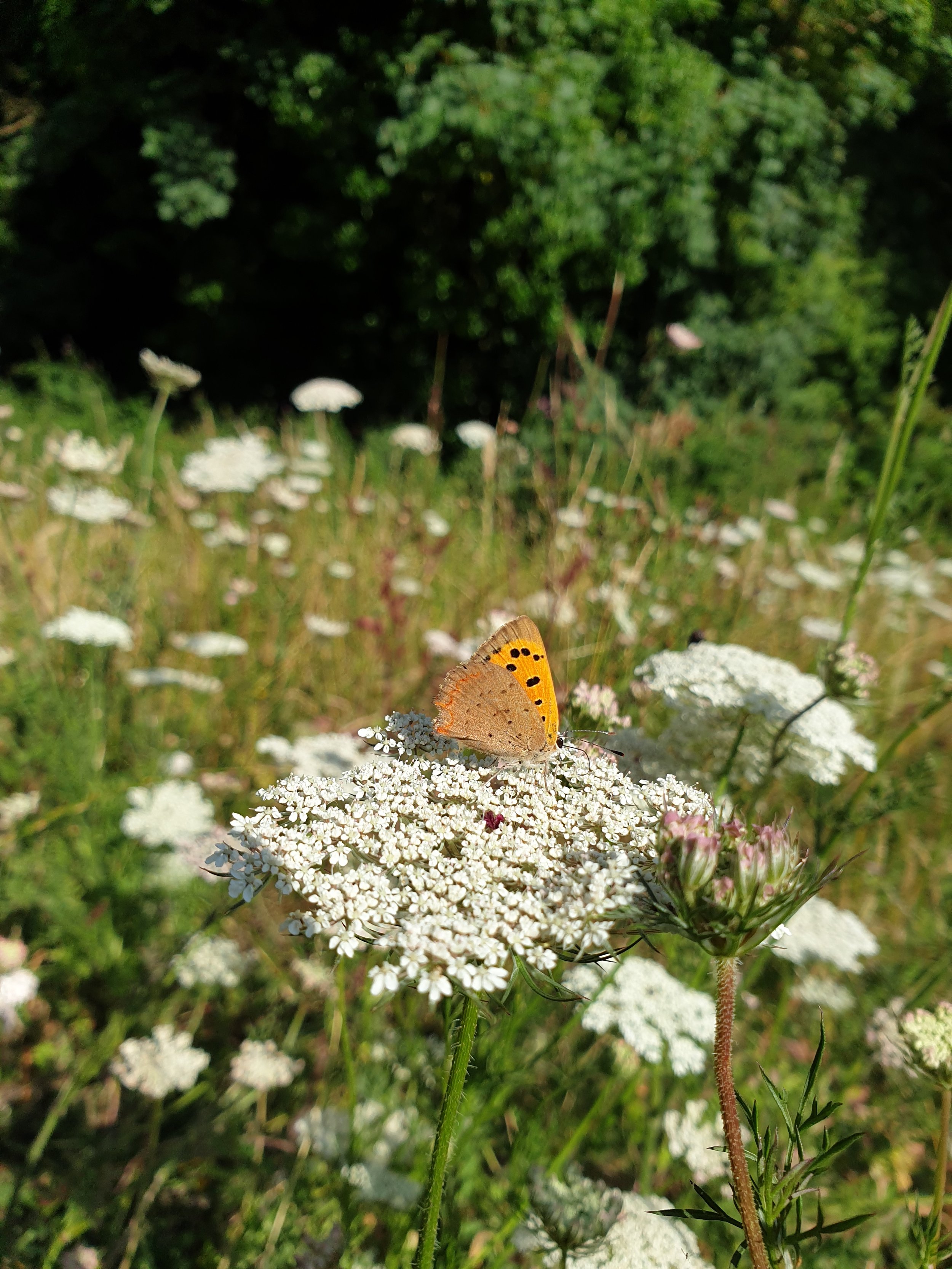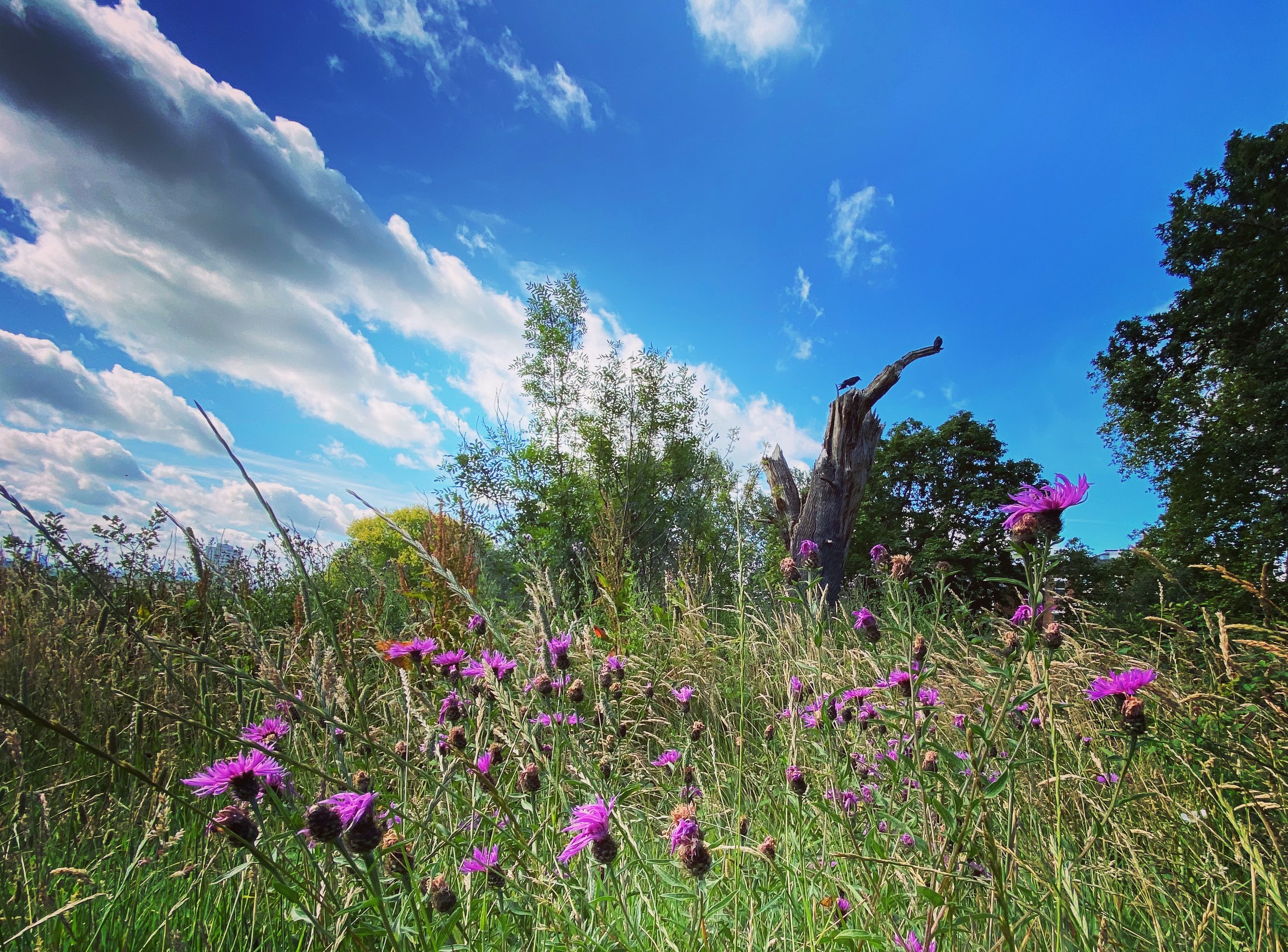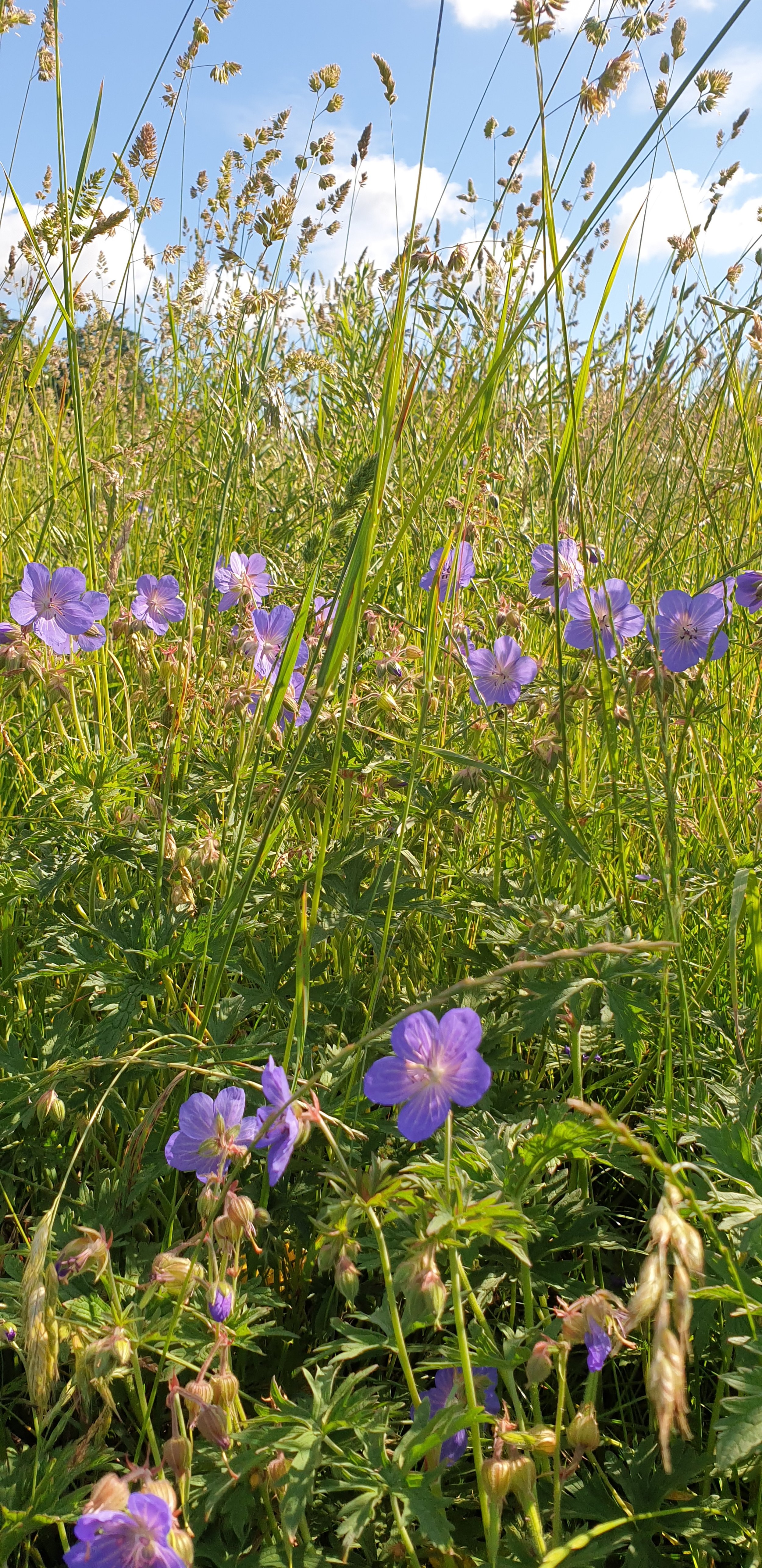
Meadows at Parliament Hill
Wildflower Meadows are one of the most important habitats for our declining pollinators, like bees and butterflies. Sadly the UK has lost 97% of its meadows since the 1940s. New meadow areas have been created in the Parliament Hill area to improve biodiversity on and around Hampstead Heath.
How you can help - new appeal!
To build on our work around the Hive, we want to create more wildflower meadows in the Parliament Hill area. Donate to our new Wildflower Meadow Appeal to support this work!
The Hive Meadow
Since September 2022, we have been converting an unloved patch of grass between the Hive building and the Savernake Road entrance into a wildflower meadow. This is part of plans to beautify this entrance to the Heath and improve habitats for butterflies across London through the Big City Butterflies project . It has been seeded with a special mix of native wildflowers and cornfield annuals, as well as planted with native bulbs and wildflower plants to provide nectar and caterpillar foodplants. Creating this new meadow required a lot of work, as you can see below and you can help us extend this work by supporting our new meadow appeal below.
Step 1 - Preparing the ground
With the help of Corporate Volunteers, we have stripped the turf, dug out the topsoil and dug in sandy gravel for drainage. Although this looks destructive, it is an essential step to allow the meadow to establish. Leaving the fertile topsoil would lead to coarse grasses and other more dominant plants outcompeting the delicate meadow seedlings. Please prevent dogs from fouling this area which would reverse our hard work!
Step 2- Seeding and Planting
Autumn is the best time to sow wildflower seed, when it would naturally fall to the ground. Prior to seeding our Youth Volunteers planted native bulbs to give a burst of spring colour and early forage for pollinators, as well as some extra perennial plants. The area was fenced to prevent trampling and dog fouling.
Step 3 - Growing
The meadow was left undisturbed through spring, and any bare patches overseeded with more wildflower mix. Bluebells flowered under the trees and the new hedge backing the meadow grew and blossomed.
Step 4 - Blooming
The summer flowers are blooming and attracting pollinators, including butterflies, bees and hoverflies. In the first year, these are mainly cornfield annuals, including blue Cornflowers, yellow Corn marigolds and red Corn Poppies, along with the perennials we planted such as Oxeye Daisy. More perennials will flower in future years. We have also been monitoring butterfly visitors and other wildlife to track the biodiversity benefit of the new meadow.
The Sparrow Site Meadow
The Sparrow Site meadow on Parliament Hill above the paddling pool was created in 2009 as a joint project with the RSPB . It is now an established wildflower meadow, with a beautiful array of flora and teeming with insect life in summer. A guide to the wildflowers is available in our shop.
Savernake Road Meadow
In 2021 we created a mini meadow opposite the Savernake Road bridge with seed and support from Grow Wild UK. This has been a great success, giving an example of what people can do in their own small spaces to benefit wildlife and provides a floral entranceway to the Heath.













